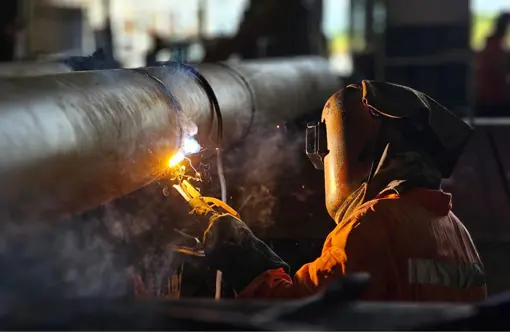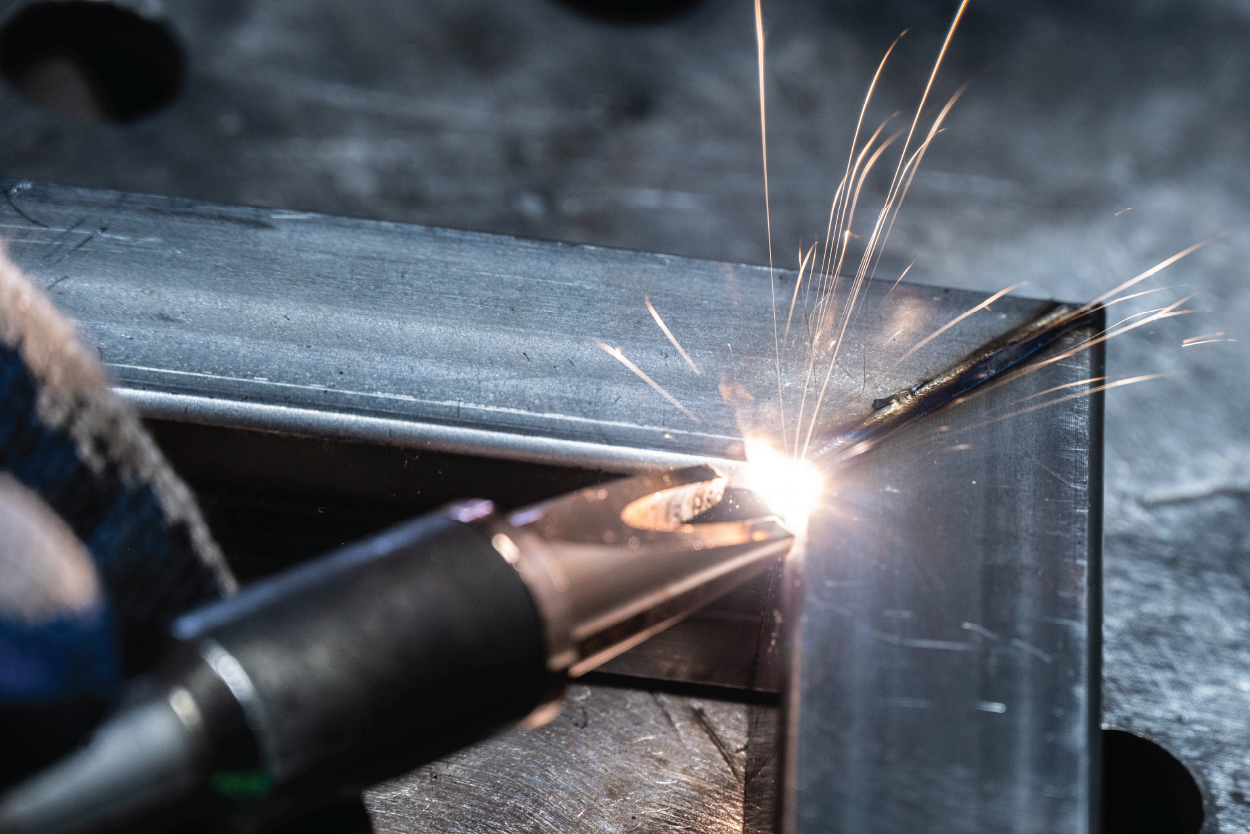Everything about Welding: Key Insights Into Techniques and Finest Practices for Success
Welding includes a range of methods, each fit for particular products and applications. Understanding these approaches, such as GMAW, SMAW, and TIG, is crucial for attaining excellent results. The best equipment and safety and security methods can not be overlooked. As prep work and troubleshooting play crucial duties in the welding process, understanding these components can considerably enhance the high quality of the end product. What are the crucial aspects that assure an effective weld?
Recognizing Different Welding Strategies
Welding strategies include a variety of approaches, each fit to particular applications and materials. Among the most common techniques are Gas Steel Arc Welding (GMAW), Shielded Steel Arc Welding (SMAW), and Tungsten Inert Gas Welding (TIG) GMAW, also referred to as MIG welding, is preferred for its speed and flexibility, making it perfect for thin products. SMAW, or stick welding, is favored for its simpleness and effectiveness in exterior settings, especially with thicker metals. TIG welding supplies precision and control, making it appropriate for elaborate job and non-ferrous steels (Belgrade Fabrication). Each method has its special benefits and factors to consider, enabling welders to select the most effective method based on the project's demands, material kind, and preferred outcomes. Understanding these methods is essential for successful welding
Important Welding Equipment and Tools
While numerous welding strategies call for details abilities, the best devices and devices are just as essential for accomplishing top quality outcomes. Important welding tools includes welding machines, which vary depending upon the technique-- such as MIG, TIG, or stick welding. Safety equipment, including safety helmets, aprons, and handwear covers, assurances security and comfort during the procedure. On top of that, components and clamps aid secure materials in place, making sure accuracy in welds. Consumables like welding poles, cable, and protecting gas are also crucial elements that influence the top quality of the weld. Additionally, devices such as cutters and grinders promote surface preparation and post-weld completing, adding to a specialist end result. Purchasing high-grade tools eventually improves the efficiency and effectiveness of welding projects.
Security Practices in Welding
Correct security practices are vital in the welding market to safeguard employees from potential hazards. Welders should wear ideal personal safety equipment (PPE), including headgears with appropriate shading, gloves, and flame-resistant clothing. Sufficient air flow is important to lower exposure to damaging fumes and gases generated throughout the welding process. Furthermore, employees ought to be learnt the correct handling of welding devices to protect against accidents. Fire precaution, such as keeping combustible products away from the welding location and having fire extinguishers readily offered, are necessary. Normal evaluations of equipment and workspaces can help determine possible risks before they bring about mishaps. By sticking to these safety practices, welders can produce a much safer working atmosphere and lessen threats connected with their profession.
Preparing Materials for Welding
Preparing materials for welding is a crucial action that significantly influences the top quality and integrity of the final product (Montana Mobile Welding and Repair). Appropriate prep work includes cleaning the surfaces to get rid of impurities such as oil, dirt, and corrosion, which can endanger the weld. Methods such as grinding, sanding, or making use of solvents are commonly utilized to achieve a clean surface. In addition, making sure that the materials fit together snugly is necessary; spaces can lead to weak welds. It's additionally vital to think about the placement and positioning of the parts, as this will certainly impact the simplicity of welding and the final result. Selecting the ideal filler material and ensuring compatibility with the base steels is crucial for accomplishing strong, resilient welds.
Tips for Getting High-Quality Welds
Achieving high-quality welds needs attention to information and adherence to finest methods throughout the welding procedure. Correct joint preparation is crucial, making certain surfaces are clean and free from impurities. Selecting the ideal filler material and welding method based on the base steels is critical for perfect bonding. Keeping consistent traveling rate and angle while welding can advertise and protect against problems harmony. In addition, managing warmth input is crucial; extreme warmth can bring about bending and compromised joints. Regularly examining the welds during the process permits immediate changes if essential. Lastly, utilizing ideal post-weld treatments, such as cleansing and stress and anxiety relief, can boost the longevity and stability of the weld, inevitably making certain a successful result.
Repairing Common Welding Issues
Welding typically provides difficulties that can impact the quality and stability of the end product. Typical problems such as porosity, irregular weld beads, and overheating can arise, each requiring specific fixing techniques. Understanding these problems is important for welders to boost their abilities and achieve excellent results.
Porosity Issues Clarified
Porosity can frequently be forgotten, it stays a vital problem in welding that can compromise the honesty of a finished product. Porosity describes the visibility of little gas pockets within the weld bead, which can damage the joint and lead to premature failure. This problem commonly develops from impurities, moisture, or improper shielding gas coverage during the welding procedure. To reduce porosity, welders ought to confirm that the base materials are tidy and completely dry, use suitable shielding gases, and keep regular welding specifications. Routinely evaluating the devices and atmosphere can likewise aid determine prospective problems before they materialize in the weld. Resolving porosity successfully is vital for attaining solid, long lasting welds that meet quality requirements.

Irregular Weld Beans
Inconsistent weld find out beads can considerably impact the quality and strength of a completed product. Various factors add to this problem, consisting of incorrect travel speed, incorrect amperage setups, and irregular electrode angles. When the welder relocates as well rapidly, a grain may show up slim and do not have penetration, while relocating also gradually can trigger too much build-up. In addition, utilizing the incorrect amperage can lead to either damaging or too much spatter, both of which concession weld integrity. The welder's method, such as inconsistent lantern activity, can also result in unequal bead appearance. To minimize these issues, welders must concentrate on keeping constant, regulated motions and guaranteeing appropriate tools setups to attain uniformity in their welds. Uniformity is crucial to achieving reliable and solid welds.
Getting Too Hot and Bending Issues
Excessive warm during the welding process can bring about considerable overheating and contorting issues, affecting the architectural stability of the workpiece. These issues commonly manifest as distortion, which can jeopardize positioning and fit-up, making additional setting up challenging. Aspects adding to overheating consist of the option of welding parameters, such as voltage and take a trip rate, in addition to the type of product being bonded. To minimize these issues, welders must maintain constant traveling rate and proper warmth input while checking the work surface temperature level. Additionally, pre-heating or post-weld heat therapy can assist minimize tensions brought on by rapid cooling - Montana Mobile Welding and Repair Fabrication. Routine evaluation and adherence to ideal techniques are essential in stopping overheating and making sure the durability and integrity of bonded structures
Often Asked Questions
What Are the Occupation Opportunities in the Welding Market?
The welding industry provides diverse profession possibilities, consisting of positions as welders, assessors, engineers, and instructors. Specialists can operate in production, building, aerospace, and automotive sectors, taking advantage of solid need kweld spot welder and competitive wages in various duties.
How Can I Improve My Welding Rate Without Sacrificing Top Quality?
To improve welding speed without giving up top quality, one should practice reliable techniques, maintain devices, optimize settings, and enhance hand-eye control. Normal training and looking for responses can also substantially add to accomplishing quicker, high-quality welds.
What Qualifications Are Offered for Welders?
Countless qualifications exist for welders, consisting of those from the American Welding Society (AWS), the National Facility for Construction Education And Learning and Research Study (NCCER), and various industry-specific companies. These credentials enhance employability and show ability efficiency.
Just How Does Welding Influence the Residences of Metals?
Welding affects the properties of metals by modifying their microstructure, which can cause changes in firmness, ductility, and toughness. Heat input and air conditioning rates throughout the process significantly affect these material features.
Can I Weld Dissimilar Metals With Each Other?
